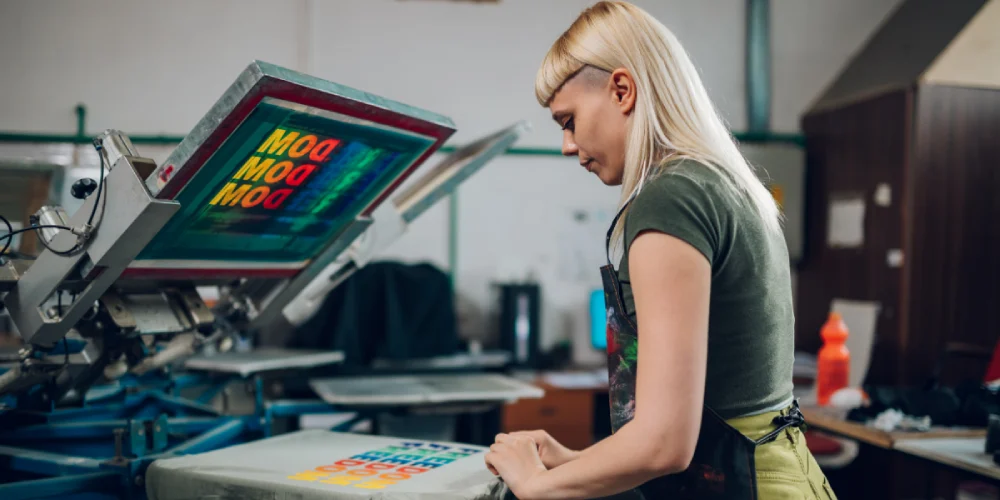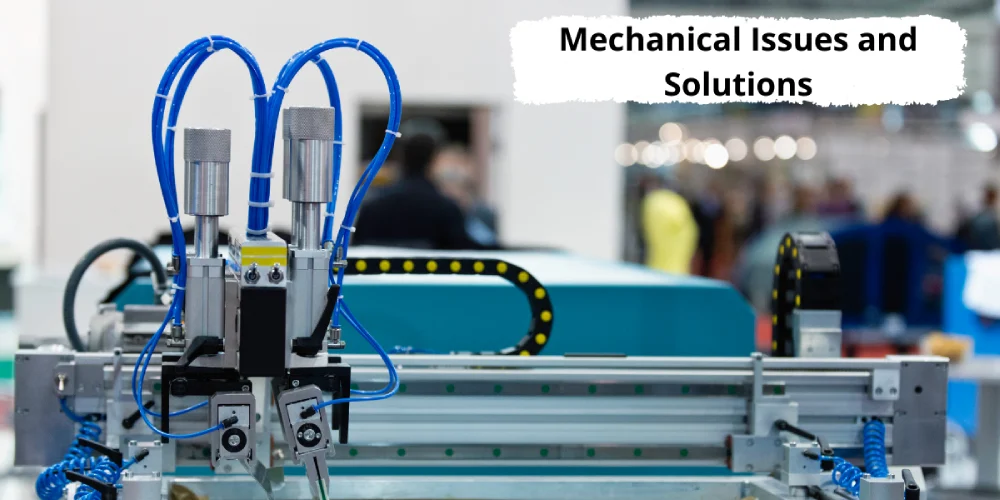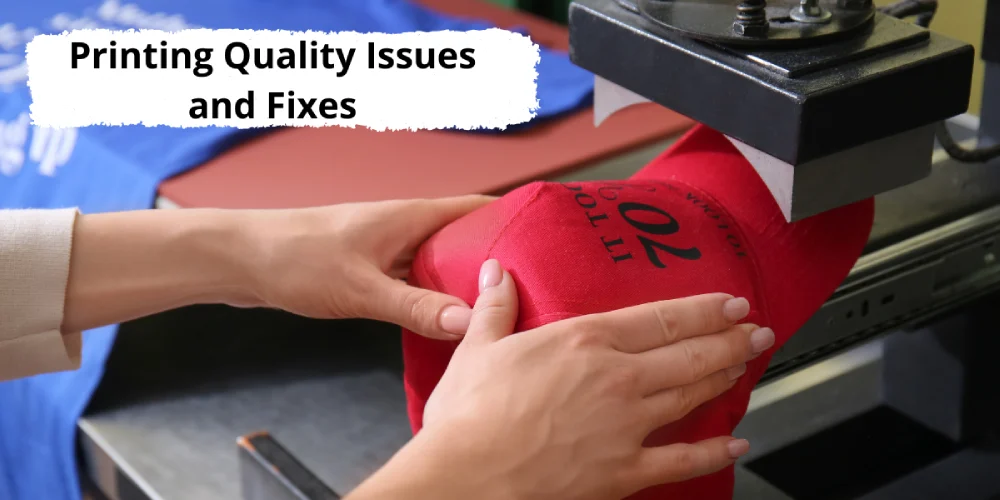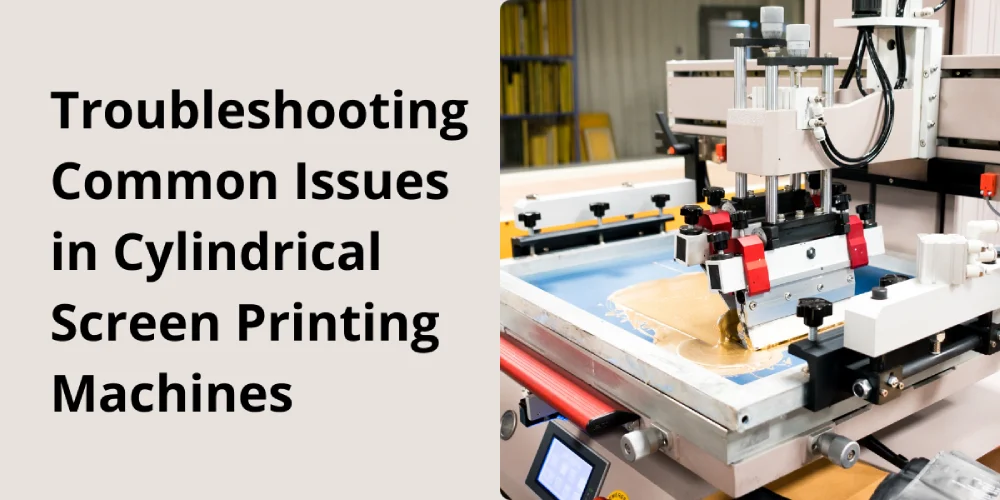Cylindrical screen printing equipment is used to produce precise prints on curved surfaces. They are used in the manufacturing of buckets, medical tubes, water bottles, and cosmetic bottles. Their ability to apply sharp and durable graphics makes them a reliable choice for high-volume packaging.
These machines use precise alignment, ink control, and pressure settings to maintain quality. When even small errors occur, the result can be smudging, faded prints, or wasted material.
Operators commonly face the problem in long production runs. Especially in cases when you need consistent and quick results.
Frequent troubleshooting ensures that the equipment will continue to operate at its optimum level. It reduces downtime, prevents costly misprints, and extends machine life.
For a business, the gain is pretty straightforward. The machines cut out extra handling, so jobs move faster. At the same time, every unit comes out with the same print quality, which keeps branding consistent.

Overview of Cylindrical Screen Printing Machines
Cylindrical screen printing machines handle round and curved surfaces. They’re used on bottles, cans, and tubes. The design keeps the print sharp across the curve. The system pushes ink evenly. This ensures smooth transfer and consistent coverage.
The main components drive the process step by step. Screens hold the design in place, and the squeegee drives the ink through with even pressure. Rotary tables and conveyors keep the objects aligned, and UV curing units lock the print in place.
Automatic and semi-automatic machines differ in workflow control. Automatic units manage feeding, printing, and curing with minimal operator input. Semi-automatic systems need manual loading and some alignment, but they cost less and are easier to maintain.
These machines handle more than just simple logos. They support multi-color printing with sharp detail and good ink adhesion. They handle high volumes while keeping the print detail sharp.
Mechanical Issues and Solutions
Cylinder or screen misalignment often shows up as prints that look shifted or slightly blurred. Most of the time, it comes down to loose clamps, worn bearings, or a bad setup during changeover. You can spot it by checking the registration marks and fixing it by tightening the frame.
Uneven ink flow usually comes from worn squeegees or loose mesh tension. Ink thickness makes a big difference in print quality.
Too thick and it drags with streaks, too thin and it runs over the surface. Swapping squeegees and adjusting mesh tension balances the flow.
The basic reason for motor or conveyor malfunctions is servo drive errors or jams in the rotary table. Machines stop working when belts slip, dust clogs sensors, or gears don’t line up right. Resetting the drive and clearing jams restores smooth motion.
Hit the machine with regular maintenance before it breaks; that’s the best way to dodge downtime. Lubricating moving shafts, rollers, and bearings reduces wear. Do routine calibration and checks to spot minor faults early and keep the press running stably.

Electrical and Sensor Problems
Errors like “no object, no printing” usually point back to the sensor. Most times, it’s not a big failure, just dirt on the lens or a slight misalignment. Clean it, adjust the angle, and the sensor starts reading fine again.
Air pressure alarms are also common in these machines. They indicate either an unstable supply or a faulty pressure sensor. Always confirm the compressor output and sensor wiring before replacing parts.
Control systems bring their own set of problems. Sometimes the touchscreen just locks up because the PLC lost communication or a program hiccuped.
Hitting a soft reset usually brings it back to life. If it keeps acting up, reload the specific module and test it again.
Power glitches can mess with the machine randomly. Usually, it’s a loose wire, a grounding issue, or the voltage dipping. I check it with a meter and snug every connection until it’s solid.
Troubleshooting should follow safe steps. Cut the power first, then flip through the modules one at a time to reset them.
Note down all the errors or faults as they happen. It makes spotting recurring issues and fixing them much quicker.
Printing Quality Issues and Fixes
Color fading or uneven prints usually come from UV curing problems or using the wrong ink. Loose screen tension often leads to uneven prints.
Most fading problems can be fixed by tweaking curing times and using the right type of ink. Simple adjustments usually make the results consistent.
Smudges or double prints usually happen when the conveyor moves out of sync with the printing cycle. If the registration is off, prints can overlap. Adjusting the conveyor and realigning the registration points usually clears the issue.
Pattern clarity problems often result from worn or damaged mesh. Tiny debris or buildup on the screen can easily block ink flow. Regular cleaning and inspecting the mesh prevent blurry or incomplete patterns.
Overall, prints remain sharp through careful curing adjustments, regular cleaning, and appropriate ink choices. These actions reduce waste. Consistency improves across different batches.

Automation and Software Glitches
If the software misinterprets sensor inputs, automatic alignment may not work. Printers may drift slightly, causing uneven coverage. Calibration must be checked before each run.
Multi-color registration errors often stem from timing mismatches between motors and print cycles. Layers can overlap or misalign, ruining precision. Adjusting cycle speeds usually fixes minor misregistrations.
Firmware updates can improve stability and fix hidden bugs. Manufacturers usually provide recommended settings to get the best results. Following these guidelines prevents avoidable errors and keeps production consistent.
Operators should watch logs and error messages closely. Quick detection reduces downtime. Maintaining a checklist helps in troubleshooting glitches efficiently.
Preventive Maintenance Checklist
| Component | Frequency | Key Actions |
| Screen & squeegee | Daily | Wipe clean, check tension, look for wear |
| Conveyor & rotary table | Weekly | Lubricate parts, align properly, and test motors |
| UV curing unit | Monthly | Check lamps, clean reflectors |
| Sensors & electronics | Monthly | Test connections, make sure calibration is correct |
| Ink supply system | Daily | Stir the ink, remove any clogs |
Best Troubleshooting Practices
The best course of action is to begin methodically and gradually. Take a close look at the machine and the latest prints to see exactly what’s going wrong.
Firstly, identify which part is actually making the problem, and apply the fix. Always run a test print to make sure the problem is fully cleared.
Keep detailed logs for recurring errors. Note the type of issue, time, and operator actions. Over time, these logs highlight patterns and help prevent repeat mistakes.
Show operators how to handle minor fixes safely. Teach basic adjustments and emergency stops. Well-trained staff minimize downtime and keep print quality consistent.
When to Contact Manufacturer Support
Some problems are not just operator-related. Recurring error codes, complicated electrical issues, or significant motor failures require expert assistance. Trying DIY on these can void your warranty or make damage worse.
Manufacturer guidance helps to keep your warranty valid. They provide tested procedures and approved parts. This avoids unnecessary downtime and keeps your machine safe.
Auto Print Tech and other brands offer remote or on-site support. Technicians can do the repairs themselves or walk you through each step. Reaching out early often saves time and prevents bigger problems later.
Conclusion
Cylindrical screen printing machines deliver precision and speed, but issues are inevitable. Frequent troubleshooting keeps them functioning properly. Small problems caught early prevent costly downtime.
Pay attention to mechanical, electrical, and software components. Adjustments, cleaning, and calibration maintain consistent print quality. Logging issues helps spot recurring faults.
The operators perform daily key maintenance. Training on minor fixes reduces interruptions. For complex problems, let the manufacturer repair, keeping the warranty intact.
Following these practices extends machine life. Prints stay sharp and consistent across batches. In the end, preventative care safeguards output and material quality.
FAQs
What Is A Cylindrical Screen Printing Machine?
It’s a printer built to apply sharp, precise designs onto round or curved surfaces.
Why Is My Print Pattern Misaligned?
Misalignment usually happens when the screens are loose, the conveyor timing is off, or the registration isn’t set right.
What Causes Uneven Ink Distribution?
Uneven ink flow often shows up when the squeegee is worn, the mesh tension is uneven, or the ink’s consistency isn’t right.
Why Does The Sensor Trigger “No Object, No Printing”?
The sensor is likely dirty, misaligned, or seeing an unstable signal.
How Can I Fix Smudged Prints?
Check conveyor sync, screen tension, and ink thickness, then run a test print.
What Maintenance Is Required Daily?
Wipe screens and squeegees, stir ink, and clear clogs in the supply system.
When Should I Contact Support?
Reach out for repeated errors, major motor faults, or complex electrical issues.
Can Software Glitches Affect Multi-Color Prints?
Yes. If the timing is off or the sensors read things wrong, the colors won’t line up, and the print gets misaligned.
How Do I Extend The Life Of My Machine?
Regular lubrication, calibration, and preventive maintenance keep everything running smoothly.
Is Operator Training Important?
Absolutely, well-trained operators handle minor fixes quickly and prevent downtime.
Keep your prints sharp – start daily maintenance and troubleshoot issues before they slow you down.

